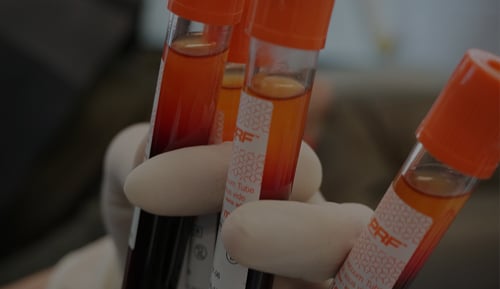
Platelet-rich plasma (PRP) and platelet-rich fibrin (PRF) are autologous platelet concentrates made from a patient’s blood used to create the body’s healing serum.
When it comes to skincare procedures like microneedling and injections, the properties found in PRP and PRF make them superior to manufactured products. We use the purest and most natural source of growth factors available by drawing a patient’s blood and using their plasma for these procedures, resulting in excellent skin tone and texture, and helping with anti-aging and acne scar treatments.
What Are the Differences between PRP and PRF?
Platelet-rich plasma or PRP is a result of high-speed centrifugation of blood. The red, white, and stem cells in the blood are divided into two layers, with the heavier red, white, and stem cells settling at the bottom. In the meantime, the lighter platelets and plasma can be obtained from the top of an anticoagulant-containing tube.
On the other hand, PRF is the next generation of PRP. It’s a result of centrifuging blood at a low speed, which separates the blood into layers that aren’t as distinct as PRP’s. This allows for the collection of specific white cells, growth factors, and stem cells, as well as platelets, from a tube that does not contain an anticoagulant additive. These added features make PRF a much more desirable product for use in skincare treatments.
How Are PRP and PRF Used?
Microneedling with PRP and microneedling with PRF are used in med spas for anti-aging and acne scar treatments, and improving skin tone and texture, as previously described.
The said treatments are determined according to a patient’s individual’s symptoms, and can include several procedures. For example, if a patient is worried about fine lines and skin texture, microneedling can be all that is required. Injections would almost certainly be needed for deep wrinkles, under-eye discoloration, and puffiness. PRP or PRF is used in the same way as standard fillers, and Botox injections are used in this situation. The number of treatments required will be determined by the client’s desired outcome and skin condition during the initial consultation.
What Are the Steps in the Process?
The patient’s blood is extracted into either a tube containing an anticoagulant for PRP or a tube containing no anticoagulant for PRF. The sample is then centrifuged, and only the most concentrated part is drawn into a syringe for use.
What Can I Expect from PRP and PRF?
PRP is a compelling product that can help with fine lines, wrinkles, and acne scarring, although it can require many treatments to achieve the desired results. But since PRP is extracted in a tube with an anticoagulant, we have a lot of flexibility in the amount of time we can inject or microneedle it into the skin. On the other hand, since PRF is collected in a tube without anticoagulant, it can only be used within 15 minutes after the collection.
PRF treatments continue to release growth factors over time, so they have even longer-lasting effects. The most corrective and rejuvenating results come from a series of three therapies spaced 3-6 weeks apart. Due to a variety of factors such as age, skin problems, and at-home routine, treatment outcomes can differ from patient to patient.



